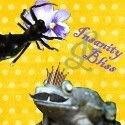 Bessie Coleman
Bessie ColemanIn 1921 Bessie Coleman became the first African American woman in the world to earn an aviation pilot's license, actually earning the higher certification of International Pilot's license, taking her examination in France. Soon after doing so she realized she could actually make a living as a pilot and changed her life towards doing so.
Born in 1892, Coleman was the 10th of 13 children in the deeply segregated south. Recognizing the limitations of life in small town Texas, Coleman moved with two of her brothers north to Chicago. She worked there for several years as a manicurist until she managed to save enough money to first study French, and then, in 1920, move to Paris.
Living in France Coleman was exposed to opportunities previously unvisited during her life in the United States. After learning to fly in France, Coleman further developed her skills by studying for over two months with an ace pilot. She then returned to the states to begin a new career. In pursuing her flying career (this is decades before commercial flying became a reality) Coleman realized she would have to develop even stunt flying skills to attract attention from the public. Unfortunately, in the United States the fact that she was a black woman meant no one with such knowledge was willing to teach her. Determined, she sailed back to Europe and studied first advanced aviation in France, and then went on to the Netherlands to studying individually with a stunt pilot there.
In 1921 she returned to the United States and quickly became a star performing as Queen Bess, showcasing her signature stunt of barnstorming. She became a huge draw for crowds and was known for doing whatever it took to complete incredibly difficult stunts. As a result she was also flying in the United States three years before the famed Amelia Earhart would begin.
Coleman said that from the beginning she was determined to channel any fame she garnered through this career towards higher ends. Coleman was known for using her reputation towards making positive social changes in whatever manner she could, even if only towards small changes.
Coleman's lifelong dream was to begin a school of aviation in the United States specifically dedicated to training black men and women that wanted to learn to fly. Unfortunately, she died before being able to achieve the goal. However, William J. Powell began the Bessie Coleman Aero Club in 1929, and also wrote BLACK WINGS, dedicated to Coleman, promoting the cause of black aviation. In the book he said of Coleman, "Because of Bessie Coleman, we have overcome that which was worse than racial barriers. We have overcome the barriers within ourselves and dared to dream."
Coleman died unexpectedly at the age of 34 due to a mechanical error on her newly purchased plane. Her body was brought to three different funeral services in three different cities in the Eastern United States. More than 16,000 people combined attended the three funerals. Following her death, the reality of Coleman's position in American aviation took hold in a new way. In honor of her legacy, recognition of black aviation exploded across the United States leading to the organizing of Bessie Coleman Aero Clubs throughout the country, and a number of all black aviation exhibitions, each of which gathered thousands of guests. She has been inducted into both the Texas, and the United States Halls of Fame, and also has a park in Chicago named in her honor.













No comments:
Post a Comment